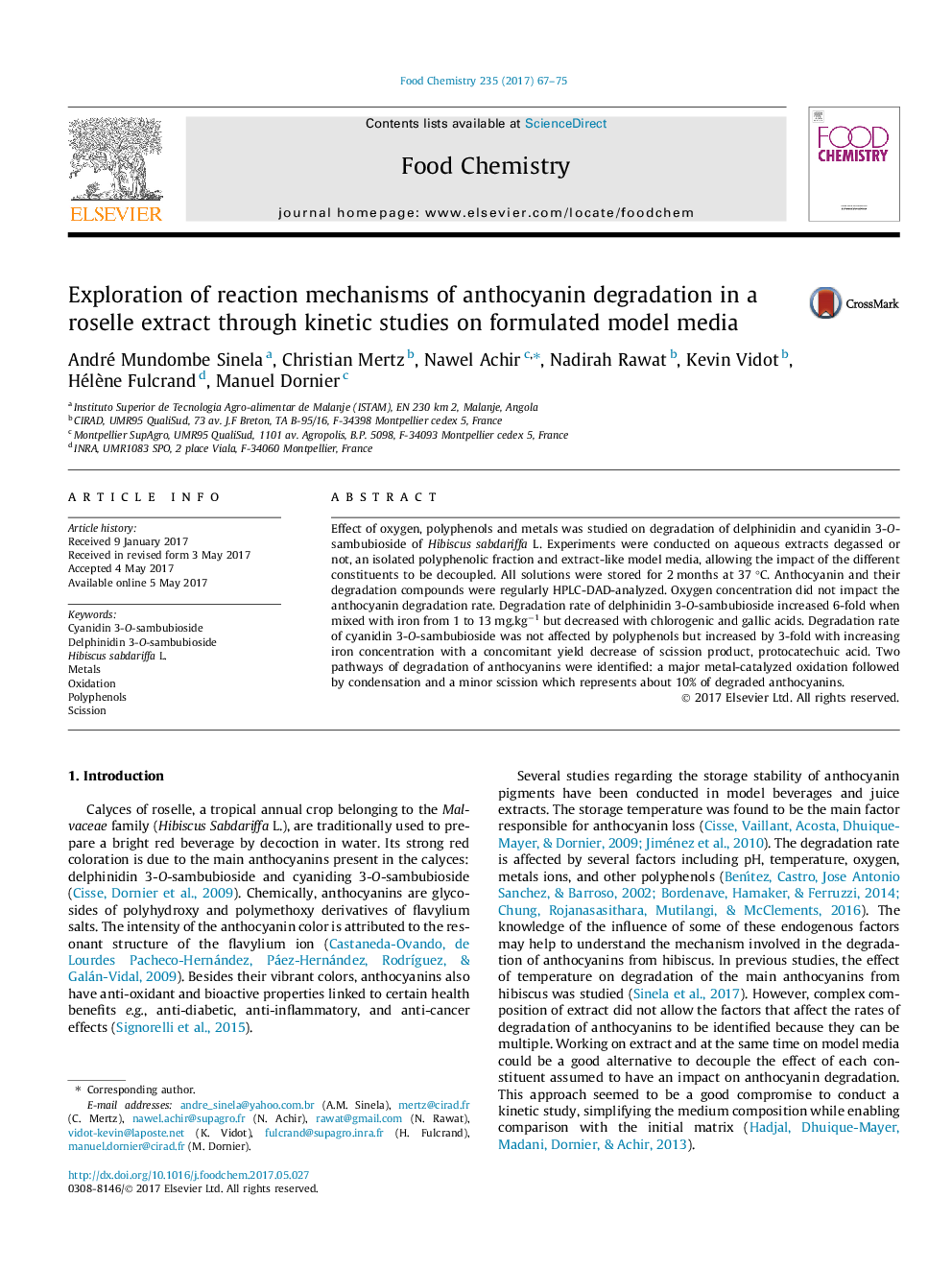| Article ID | Journal | Published Year | Pages | File Type |
|---|---|---|---|---|
| 5133337 | Food Chemistry | 2017 | 9 Pages |
â¢Effects of O2, metals and phenolics on the degradation of the 2 main anthocyanins.â¢No impact of O2 on anthocyanin degradation.â¢Fe(III) (1-13 mg.kgâ1) increased by 3-6 fold the anthocyanin degradation rate.â¢Phenolics can be anti- or pro-oxidant depending on anthocyanin type.â¢Scission pathway minor compared to condensation after metal-catalyzed oxidation.
Effect of oxygen, polyphenols and metals was studied on degradation of delphinidin and cyanidin 3-O-sambubioside of Hibiscus sabdariffa L. Experiments were conducted on aqueous extracts degassed or not, an isolated polyphenolic fraction and extract-like model media, allowing the impact of the different constituents to be decoupled. All solutions were stored for 2 months at 37 °C. Anthocyanin and their degradation compounds were regularly HPLC-DAD-analyzed. Oxygen concentration did not impact the anthocyanin degradation rate. Degradation rate of delphinidin 3-O-sambubioside increased 6-fold when mixed with iron from 1 to 13 mg.kgâ1 but decreased with chlorogenic and gallic acids. Degradation rate of cyanidin 3-O-sambubioside was not affected by polyphenols but increased by 3-fold with increasing iron concentration with a concomitant yield decrease of scission product, protocatechuic acid. Two pathways of degradation of anthocyanins were identified: a major metal-catalyzed oxidation followed by condensation and a minor scission which represents about 10% of degraded anthocyanins.
